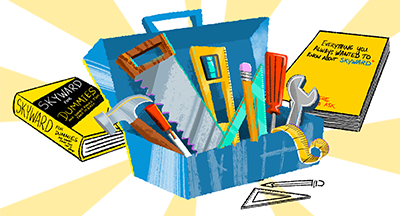Video School: A Digital Alternative to Professional Development
#Tips
Lauren Gilchrist

|
Lauren Gilchrist On the Scene |
 |  | 
|
 |
Just as the tools and methods used to educate today’s students are changing, so are the ways educators are expanding their personal toolkits. Today, motivated teachers looking to explore new instructional approaches or learn about new technologies can often get more out of a few productive hours on YouTube than a day trip to a far away conference.
For this episode of Video School, we paid a visit to P.J. Jacobs Junior High School in Stevens Point, WI, to learn more about how their educators and technology support staff are using video to create and consume more impactful professional development resources.
The Importance of Professional Development
“Professional development is probably one of the most important areas that we, as adults in the building, [can focus on] in order to continue to prepare each student to be successful. A highly-skilled, highly-trained staff will mean that our students will receive a world-class education.”
- Dr. Attila Weninger, former superintendent of the Stevens Point Area School District
The importance of professional development cannot be overstated. Top-tier schools are built on a foundation of educators who are continuously testing their own assumptions and practices and striving to improve.
Unfortunately, according to the Center for Public Education, “Most teachers only experience traditional, workshop-based professional development, even though research shows it is ineffective… Short, one-shot workshops often don’t change teacher practice and have no effect on student achievement.”
Enter videos.
Learning from Videos
“These are videos that are there to help you out… It’s going to help you maybe incorporate something that will take what you do now and put a twist on it to help your students.”
– Josh Hames, 7th grade science teacher
It’s extremely important for educators to continuously strive to improve. Fortunately, videos have made it so much easier to do so. Teachers who use professional development videos have the flexibility to learn at their own pace and the convenience of doing so from their homes, classrooms, or on the go.
They also have the liberty to review material as often as they like, a freedom that makes them more likely to truly learn from the videos and implement what they’ve been taught. Finally, videos are an easy way for teachers to explore topics and practices they are not familiar with, providing them with basic training to help their students in a wider scope of areas.
Creating Videos
“It’s become a part of the culture… We’ve tried many different approaches to professional development. We have really listened to feedback from staff. We are trying to give them exactly what they want.”
– Liz Steele, technology integration specialist
Don’t shy away from the thought of using videos to teach your fellow educators. Distributing a video is an ideal method to consider. They are commonly used to explain unfamiliar processes or answer frequently asked questions, which can save you a lot of time and eliminate the need to repeat yourself. Here are a few other examples you and your school could try:
- The principal could create an “observational rubric video” demonstrating or discussing a lesson that fits all of his or her criteria.
- Teachers could work together to produce an ongoing video series used to share best practices for topics such as parent engagement, homework collection, and test preparation.
- Technology directors could create tutorial videos explaining how to use a device or program, or the best way to integrate new technology with a curriculum.
- Administrators could partner with a school in another location (there are no boundaries since video collaboration eliminates location barriers) to share tips and tricks.
“It’s there anytime you want it. Video clips, I think, are the wave of the future.”
– Dave Grabski, 7th and 8th grade science teacher
If you are looking for the most convenient, effective way to pursue professional development, look no further than the world of digital media. Videos provide an easy method for teachers to continue learning and developing, while giving technology coordinators a better medium through which to reach their audience. In both cases, the end result is better quality instruction. Isn’t that enough of a reason to give them a try?
How does your school use video? Do you use video for community news updates? Do your teachers practice flipped teaching? Whatever your innovative video-related idea, we’d love to hear about it. Contact us or leave a note in the comments; we may send our crew to feature you on an episode of Video School!

 Get started
Get started







